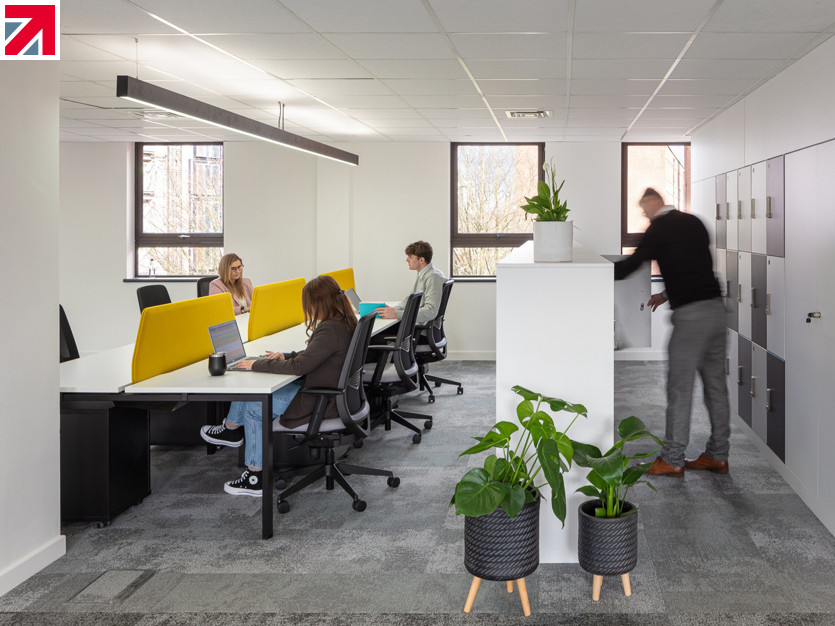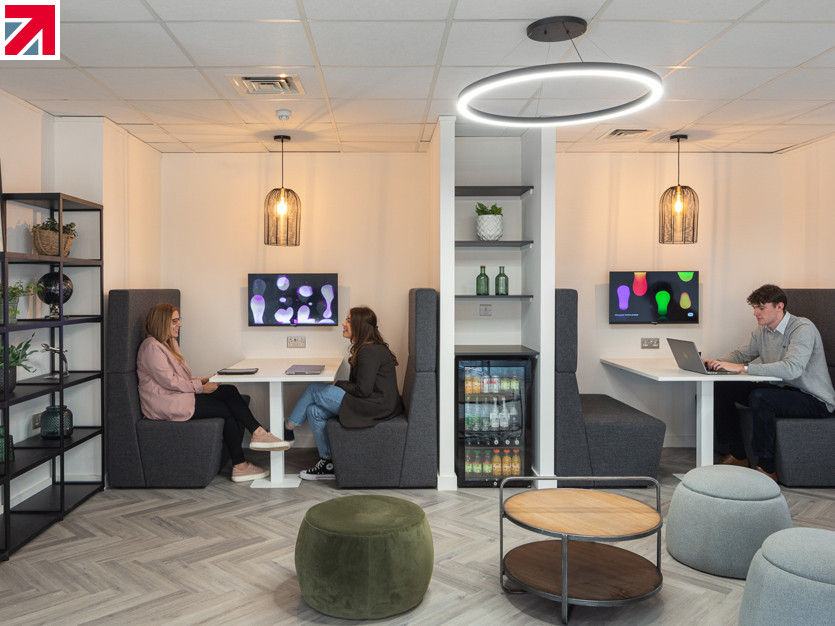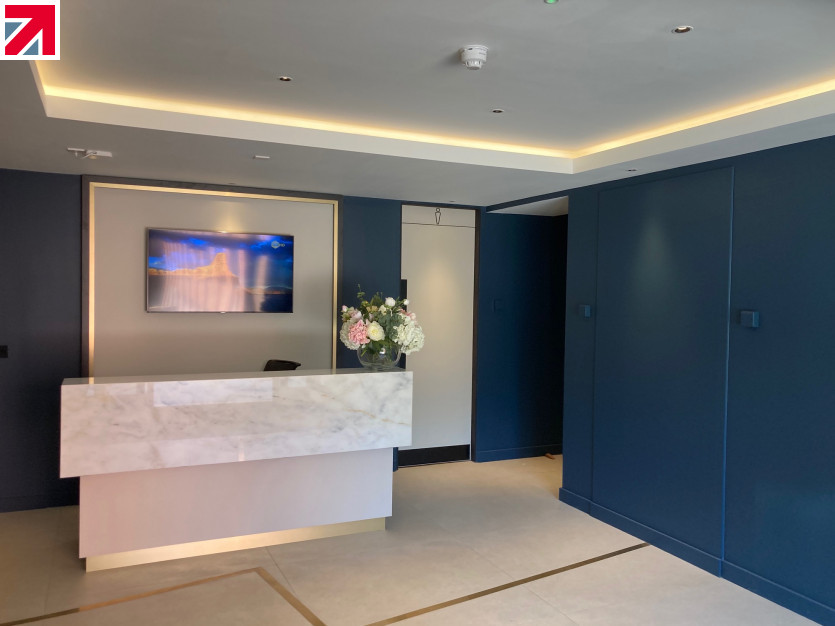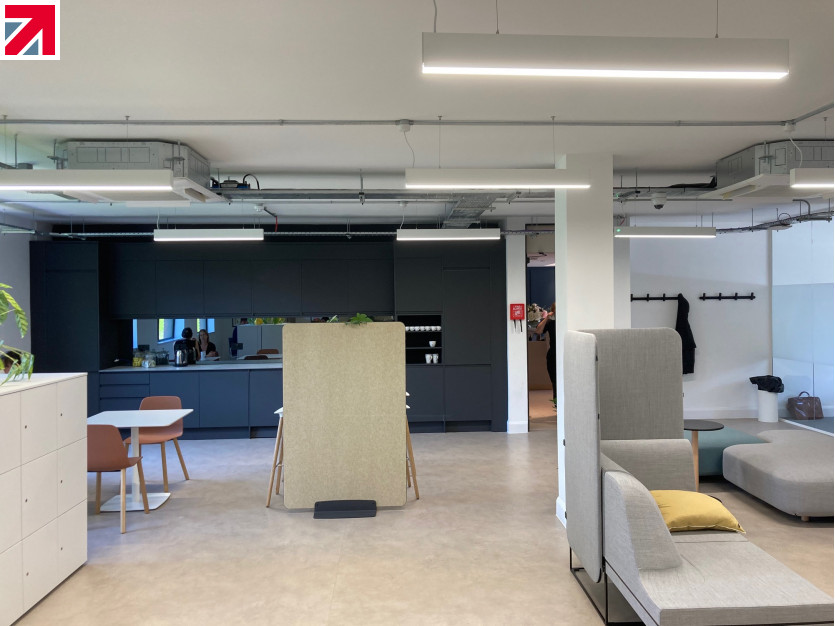Office Lighting Regulations
Lighting is one of the most important aspects of health and safety in offices. Office lighting regulations in the UK refer to lighting being safe and not posing a health risk to employees and other users of commercial premises in line with the Management of Health and Safety at Work Regulations 1999 act.
The need for appropriate lighting is detailed in many pieces of legislation including the various UK Building Regulations and the Health and Safety at Work, etc Act 1974 (HSWA). This can be a challenge, as “lighting an environment is often a complex task principally considered during the design stage of the building. HSWA also mentions that “lighting should be designed for the tasks that individuals are carrying out within that environment” and that employers “need to consider any future changes in the work conditions as this may require different lighting design”.
Regulation 8 of the Workplace (Health, Safety and Welfare), Regulations 1992 requires every workplace to have “suitable and sufficient lighting” with the accompanying Approved Code of Practice (ACOP) stating that “lighting should be sufficient to enable people to work, use facilities without experiencing eyestrain, and safely move from place to place”.
Where office lighting is considered at the design stage, it should reflect the tasks to be undertaken within that office. There are currently several legislations in the UK regarding the use of lighting at work and we will go through the most well-known.
Part L For Lighting
Part L is a UK building regulation issued by the Secretary of State which lays down specific measures to conserve fuel and power. It has now become a legal requirement that buildings are as energy efficient as possible with efficient lighting being a major part of this. Part L requirements need to be considered in cases when a building is being extended or the lighting is replaced in an existing building.
Part L consists of the following documents:
- L1A New dwellings
- L1B Existing dwellings
- L2A New buildings other than dwellings
- L2B Existing buildings other than dwellings
- L2A and L2B refer to non-domestic buildings and thus are the ones applicable to offices. The L2A document took effect on the 6th of April 2014 and is for use in England.
All documents are available here: https://www.gov.uk/government/publications/conservation-of-fuel-and-power-approved-document-l
Part L considers the energy efficiency as a combination of the following metrics:
Luminaire lumens: the total amount of light produced by the luminaire after all losses have been considered
Circuit Watts: the total power consumed in the lighting circuits by the lamps and their associated control gear.
Luminaire lumens per circuit watt is calculated by dividing the luminaire lumens with the circuit watts. According to L2A, the sum of all general light fittings in offices need to be at least 60 luminaire lumens per circuit watt on average. RICOMAN provide datasheets for all our office luminaires that prove their performance is equal to or above the recommended minimum lighting efficacy values.
Lighting Energy Numerical Indicator (LENI)
LENI was introduced in April 2014 in order to measure the actual performance of a scheme and is calculated as the sum of energy used divided by the area. Compliance in this case can be demonstrated by meeting the recommended minimum standards for LENI. The calculation methodology for LENI is set out in the Non-domestic Building Services Compliance Guide. This indicator is expressed in energy used for a given lighting installation (including controls) per square metre.
The LENI of a build must not exceed the suggested limit for a given illuminance and the number of hours per year the lighting will be used for.
Requirements according to LENI suggest that office areas should have an average initial efficacy of at least 60 luminaire lumens per circuit watt. In calculating the average luminaire lumens per circuit watt, the circuit watts for each luminaire may first be multiplied by the control factors.
Society Of Light And Lighting
The Society of Light and Lighting (SLL) is part of the CIBSE (Chartered Institution of Building Services Engineers). According to the SLL, there are features of lighting that can produce an improvement in visual performance. These are the amount of light reaching the retina, the spectrum of the light (for colour discrimination) and the spatial distribution of light (to prevent or reduce shadow and glare).
The general main recommendations for improving lighting are:
Using light sources with a Colour Rendering Index (CRI) exceeding 80
Luminaires should ideally not allow a view of the light source from common viewing directions
The minimum maintained illuminance for ambient lighting should be at 50% above that recommended for the work
When designing ambient lighting, the designer should not exceed the maximum spacing/mounting height ratio of the luminaire to ensure a high illuminance uniformity
Lighting Guide 7 (LG7)
This guide is issued by the Society of Light and Lighting, advising on best lighting practices for offices. The edition covers adequate office lighting levels, how to make an employee-friendly environment and how to provide optimised lighting for specific purposes. LG7 also considers the combination of direct and indirect illumination, the use of daylight and the best use of light to eliminate glare and reflections. The guide approaches each different environment in a different way. An open plan would use different principles than a cellular one.
Glare is a huge issue discussed in LG7. Glare is causes by different levels of brightness in a specific interior area versus the general brightness of the whole space. This can be caused by parameters such as windows and luminaires that are unsuitable or placed at the wrong positions. Glare causes discomfort and tiredness, reduces productivity and can even impair vision. The UGR index shows the chance of direct glare by a luminaire. The higher UGR, the greater the chance of glare. In office areas, the value should not exceed 19 so the challenge for a successful office lighting scheme is to achieve both LG7 and UGR19.
LG7 also covers task illumination and the required colour temperatures as expressed in Kelvin degrees. Warmer colours, such as 2700K (warm white) are best to create a relaxing environment, while 4000K (cool white) keeps employees more alert. Extremely cold light sources such as 6000K or more can distort colour appearance.
Wall and ceiling illumination is also crucial as an office employee needs to be able to look away to reduce the eye strain caused by working on screens. To give one’s eyes a break, there should be a distance to look into, which should be lit to a similar level to the task area. To achieve the best distribution of light within various areas of the workspace (also known as cylindrical illumination), LG7 suggests that the area above the desks should be between 300 to 500 lux. More specifically, typical lighting design for task areas in open-plan offices will be 300 lux for mainly screen-based tasks, which can include minor paper-based tasks such as note-taking, or 500 lux for mainly paper-based tasks. Regarding 1200 to 1600 mm above floor level should be lit to 150 lux.
For further information on LG7 you can refer to CIBSE’s website here.
Lighting Guide 10 (LG10/2014)
This guide is also published by CIBSE and it focuses on designing for daylighting. LG10 addresses the issues of aesthetics and building physics that lie at the heart of the discipline of architecture. It aims more at new building design with some of the guidance applying to refurbishment projects within the UK.
The contents follow the design process, beginning with outline concepts of form and orientation and leading on to designing the building interior to successfully filter natural light through different shading systems. The guide also provides various visualisation techniques that allow the design team to explore the appearance of design solutions.
Lighting Regulations For Health And Safety
The Government’s Workplace (Health, Safety & Welfare) Regulations (WHSWR) require that all organisations must ensure that all parts of workplaces are adequately lit. Some of the main points are:
Lighting should be provided as naturally as possible. Windows and other sources of natural light should be appropriately maintained.
Sufficient emergency lighting should be provided in the event of the failure of artificial lighting.
Correct distribution of light and reducing glare are important to eliminate eyestrain for people withing a company.
It is the responsibility of the employer to ensure that all light regulating devices are positioned and maintained correctly to get the most out of the light source efficiency.
Office lighting regulations can be a complex and daunting task, but you can choose to have the experts next to you in every step of your project. RICOMAN lighting consultants have a vast experience in working on office and workplace lighting projects across the UK. If you require a new lighting scheme for existing or new office premises, get in touch with us.
Find out more about RICOMAN on their member profile page here
Member-created content 1 year ago | From members




